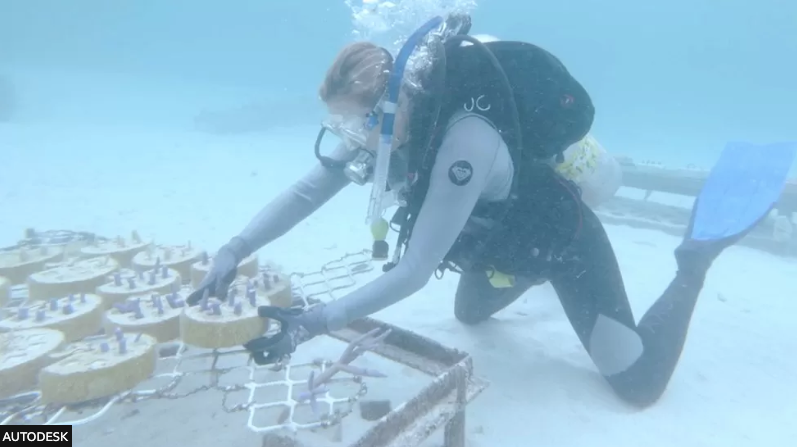Researchers in Western Australia have started training robots to glue coral frags onto frag plugs. The development has come about from coral restoration efforts in the area, where nursery-grown coral frags are transplanted onto damaged reefs.
Robotic arms have been developed by San Francisco-based engineering software firm Autodesk, in collaboration with Coral Reef Scientist Dr Taryn Foster. Using Artificial Intelligence, the robots are being trained to graft or glue coral fragments to seed plugs. Another one places them into concrete molded bases (also developed by Dr. Foster,) using vision systems to make decisions about how to grab it.

“Every piece of coral is different, even within the same species, so the robots need to recognize coral fragments and how to handle them,” Dr Nic Carey, Autodesk’s senior principal research scientist told the BBC in an interview. “Some of these processes in coral propagation are just repetitive pick and place tasks, and they’re ideally suited to robotic automation,” says Dr Foster.
Dr Foster has formed a company called Coral Maker and so far they have had success with four different coral species on several different prototype bases. The long-term aim is to increase frag production, lower costs, and even use remote-operated vehicles to place the seeded bases back out into the ocean. The plan is to move the fragging robot arms onto boats where they can do their work in the field, although the movement of the boat, wet conditions, and salt water will no doubt bring significant challenges.
With our aquarium industry hats on however, and experience working with coral wholesalers, is this an opportunity, and potential for robot arms to work 24/7 in the largest aquarium coral farms, making frags and placing them into coral trays for sale or grow out? Or is this another case of AI threatening people’s jobs?
Read the full article here,



